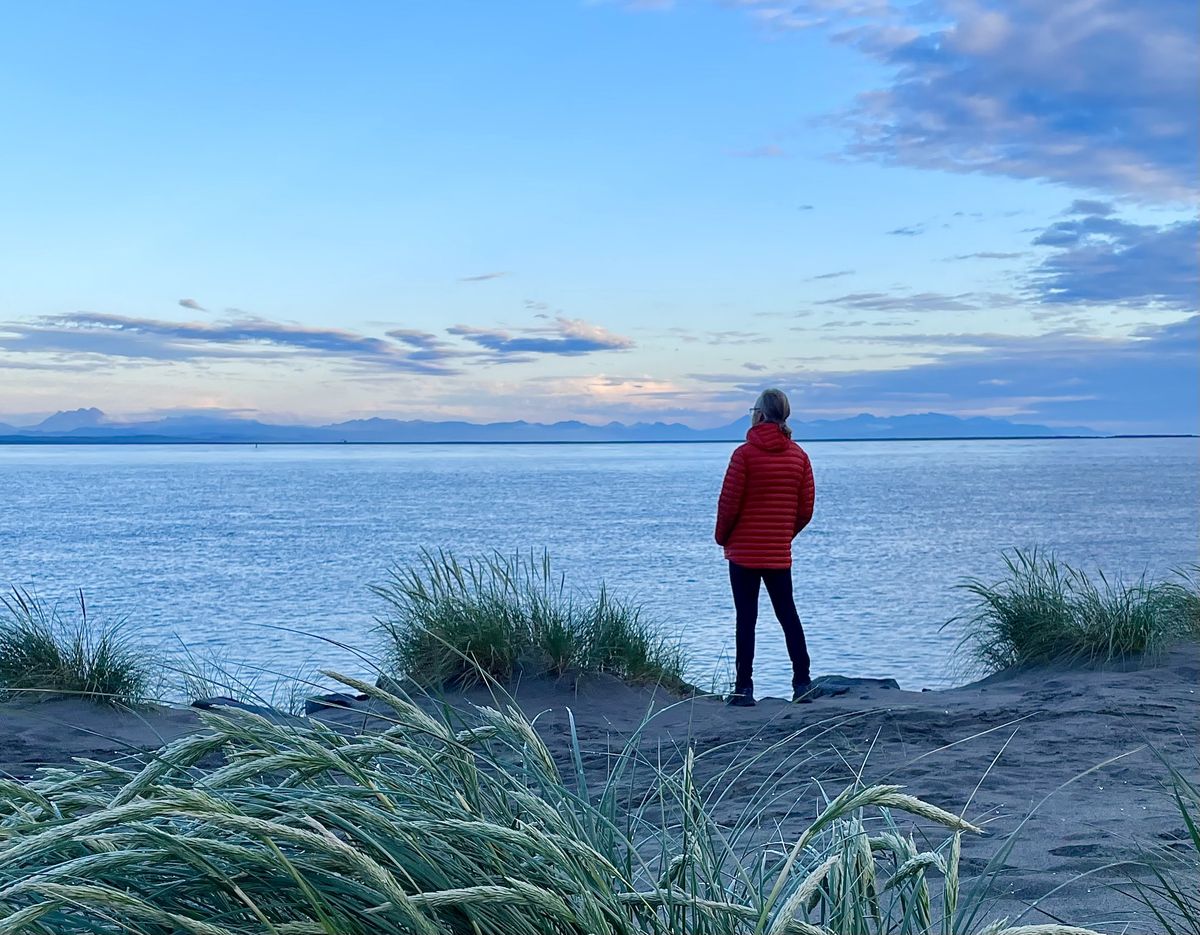Take a deep dive into Cape D’s best sights

There’s something extra special about calling a state park home for an extended period of time. We’ve truly enjoyed getting to know Cape Disappointment State Park in a way that makes it feel like an old friend.
Here are some highlights:
After-dinner bike riding to the jetty: When it’s not raining, we take full advantage of the long, gloriously light-filled evenings to take a bike ride out to the North Jetty, built by the Army Corps of Engineers to manage the mouth of the Columbia River. Stand in just the right spot and you can spy both of the historic lighthouses that have helped guide seafaring vessels for more than 100 years. Impressive!
About those lighthouses: We’re frequently asked “how do you get to the Cape Disappointment Lighthouse?” while we’re volunteering at the Lewis and Clark Interpretive Center. A quick glance of the spectacular view and it looks like an easy walk. Truth is, it’s a little more than a mile round trip and more than one visitor has complained about the lack of signage mentioning the hill climb at the end of the sometimes-muddy trail. OK, well… it’s still well worth the effort, though the North Head Lighthouse is much more accessible on a paved path.
At the other side of the park, the North Head Lighthouse, designed by Portland-based George Langford in the late 1800s, is a must-see. Plan ahead and book a stay in one of the lighthouse keeper’s quarters for a throwback to another era. Yes, there’s a big screen TV in the living room now, but the occupants of the upstairs bedrooms must still venture downstairs to use the lone bathroom.
Waikiki Beach: This stretch of sand is a long way from Honolulu, but it’s still mighty pretty, especially at low tide. A short boardwalk path leads to the cove that got its island-sounding name from locals. If you’re a fan of driftwood, this is your happy place. FYI, building elaborate forts with that wood goes against the park’s “leave no trace” ethos. This is also the best spot to snap a scenic shot of the Cape Disappointment Lighthouse.
Cool camping: The Benson Beach adjacent sites on the west end of the park includes more than 200 sites, but only a few have unobstructed views. The best bet for a powered site with a peek-a-boo view through the trees is the A loop. If dry camping is an option, B107 gets the nod for best beach site. No matter where you park it, just be aware that the weather can change quickly on the coast. The calendar might say summer, but we’re often dressed for January.
The Lewis and Clark Interpretive Center: An essential stop on a tour of Cape D, this expansive space dedicated to telling the story of the Corp of Discovery’s trip in the great unknown is also home to a fantastic maritime exhibit that’s free to the public. (The Lewis and Clark portion is $5 for adults, $2.50 for anyone under 18.) We’ve marveled at the history of shipwrecks in the area and have been impressed by the display of vintage equipment used by sailors. There’s also a section of this exhibit that tells the story of the Chinook Indians and the tribe’s frustrating, decades-long efforts to be recognized by the federal government.
Confluence Project: This permanent installation by artist Maya Lin was completed in 2006 and walks visitors dramatically through the points where the Columbia meets the Pacific. The stone fish-cleaning station with a sweeping view of the massive mouth of the river is one of our favorite places to reflect on the power of nature. It’s usually pretty quiet there, off the beaten path. But the other evening, we heard a racket. What was that honking? Aww, a couple of Canadian geese and three adorable goslings. Just take care not to step in their droppings!
Any questions? We’ll do our best to answer: goingmobile@spokesman.com.
